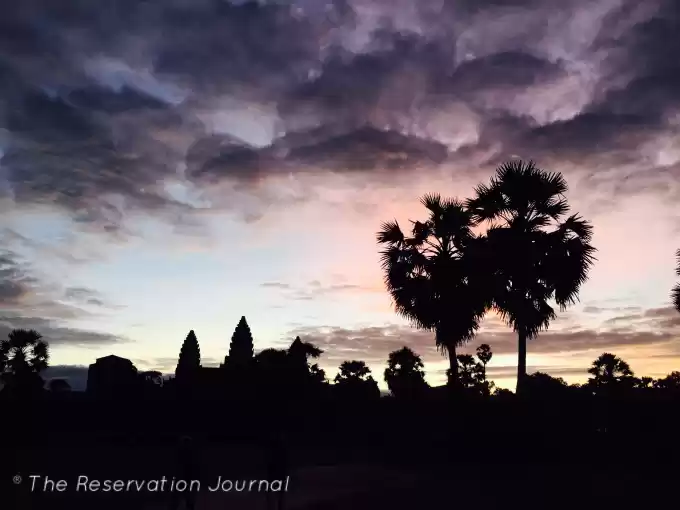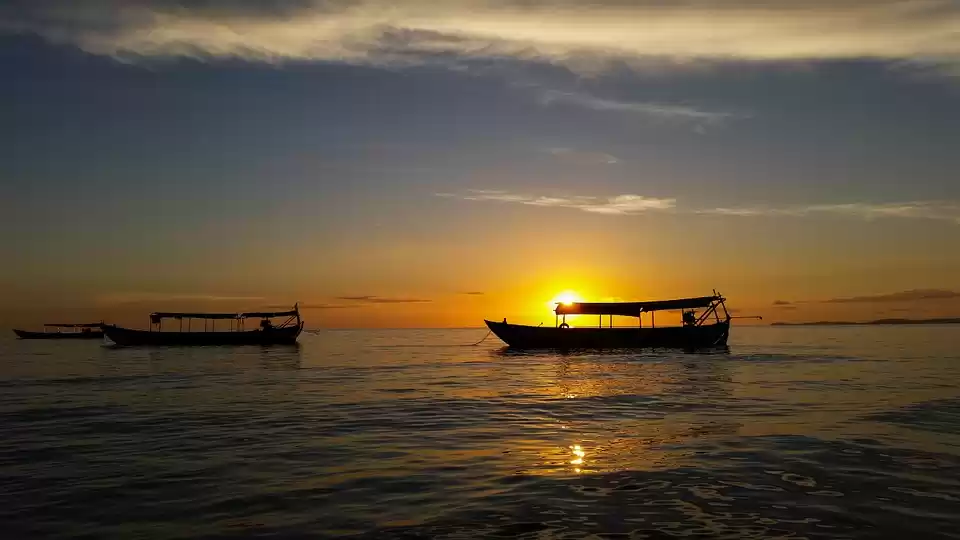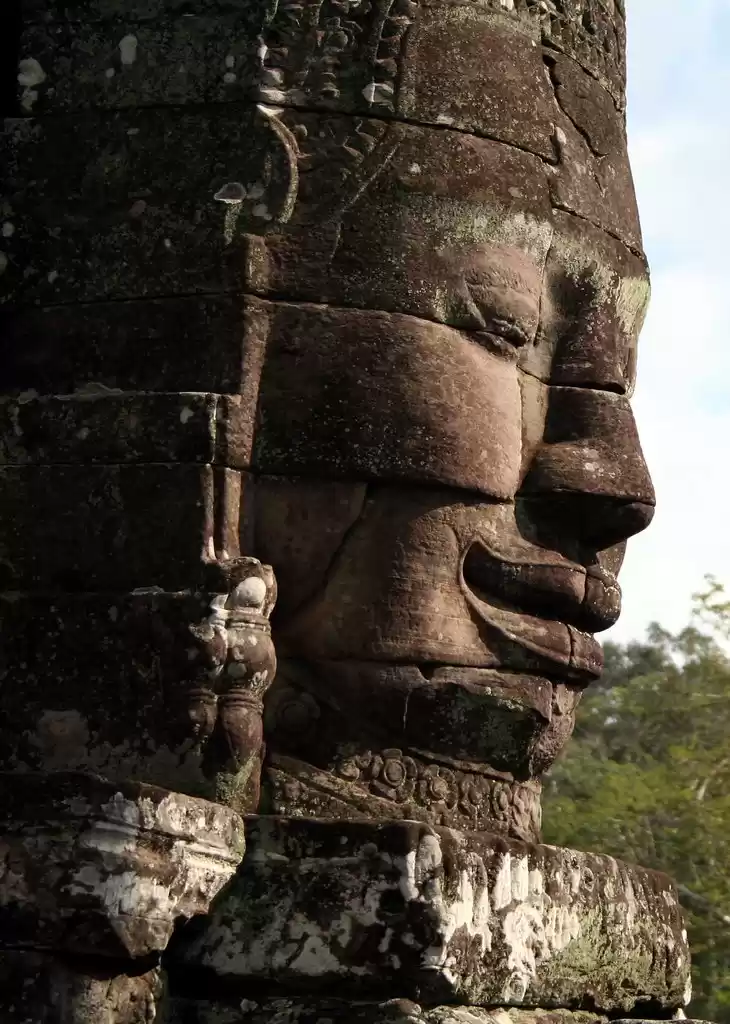Some thoughts on my recent trip to Siem Reap and exploration of the magnificent sites of Angkor

Why I visited Angkor — the story behind the plan
“Why Cambodia?!”, asked the immigration officer at Bangalore airport. “After so many years of having the passport, what has made you choose Cambodia to be the first foreign country to visit out of all possible options?”
This question took me back to a conversation on my trip to Alleppey, Kerala in December 2018. On a tour of the backwaters, I was talking to Guillaume and Marylène, an avid globetrotter couple from Canada, and they told me “Yash, it intrigues us why someone like you, who’s as passionate about travelling and exploring new places, hasn’t thought about venturing outside of his homeland to see the world”.
My next interaction soon after that was with Miguel, a Puerto Rican for whom India was the final leg of his Asia backpacking trip. Miguel couldn’t stop talking about his various travel stories, and mentioned that Siem Reap (the city where Angkor is located) was his most memorable visit during the Asia adventure.
While I interacted with many other travellers that day, the two aforementioned conversations stayed fresh in my mind, and before I realised, I was already googling Cambodia and Angkor on my phone even while the backwaters tour was still on. By the time I was back in my hostel room that evening, I had a tentative itinerary to visit Angkor in mind. The place, especially the grand Angkor Wat, had caught my fancy almost two decades before while exploring Encarta digital encyclopaedia. However, I was still surprised by how quickly I convinced myself that I had to visit the place, and it needed to happen ASAP!
It was rather amusing that I realised my passport was due for renewal only when I started the process of booking my flights to Siem Reap. For 10 years that I’d had the passport, I had multiple opportunities to travel abroad, but almost always it was a voluntary decision for me to not take up the option. And when I was all set to finally use my passport, its validity period had gone below the requirements of visa to the place I wanted to travel to!
It was arguably a brave call to go ahead with the flights and hotels bookings despite not having an eligible passport with me at that time, but given that travel to Cambodia isn’t advised in summer and rainy seasons, there was absolutely no way that I was going to wait for almost a year for making the trip!
It didn’t really help that the Passport office in Bangalore deemed my application for renewal wasn’t applicable for Tatkal (accelerated) process, and a rather nervy wait followed! But hours and hours of reading travel blogs and watching YouTube videos on Angkor convinced me that I had taken the right call, and I heaved a big sigh of relief when my new passport — no longer just a document for id proof for local utilities — was with me within a week!
It was indeed happening! The huge history-buff in me could just not wait to explore the various ruins which once represented the peak of the glorious Khmer civilisation. Reading that the original Sanskrit name of Angkor was “Yasodharapura” added a wee bit more curiosity and excitement about the place! ????
Quick facts about my trip to Siem Reap
Duration of stay
4 days (24–27 February 2019)
Travel
Connecting flights of Thai Air Asia via Bangkok, Thailand.

At present, there is no direct flight from India to Cambodia (Phnom Penh or Siem Reap). Among the various connecting flight options, felt that the Thai Air Asia flights were the most convenient in terms of travel and layover time, also the most economical.
Local travel within Siem Reap was mostly by Tuk-Tuks.
Accommodation
Stayed at Hotel Angkor Magic Tree. Booked via travel agency Lotus Incoming.

The fact that it was my first travel and that I didn’t know anyone in Cambodia was a reason for some apprehension. But the apprehension soon vanished when my research led me to Lotus Incoming and Hotel Angkor Magic Tree, which are managed by Mr Sameer and Mr Ravi respectively — both being Indians living in Siem Reap, and connecting with them prior to the trip helped in planning the itinerary well.
Itinerary
Day 1 — Arrival and hotel check-in; exploring Siem Reap city; Angkor National Museum
Day 2 — Angkor Archaeological Park — Small circuit (the main sites): Angkor Wat, Angkor Thom, Ta Prohm, Baphuon, Terrace of Elephants, Ta Keo, Pre Rup
Angkor Wat — The sandstone temple, built in the 12th century, is now in ruins but bears testimony to the glories of the Khmer civilisation. One of the biggest religious monuments in the world, it has sculptures and carvings with multiple references to Hindu mythology — Ramayana, Mahabharata, Churning of the Ocean of Milk, among others — and the attention to detail and symmetry is synonymous throughout. Contrary to the common belief, Angkor archaeological park has many more temples and ruins apart from Angkor Wat, each with a fascinating story of its own. But the grand Angkor Wat is unsurprisingly the most magnificent of them all, and I’m sure I wasn’t the only one at the place who was left in total awe.

Angkor Thom — South gate to Angkor Thom, which has depiction of the Churning of the Ocean of Milk from Hindu mythology. Angkor Thom was the last capital city of the Khmer Empire before its decline, and Jayavarman VII, the Khmer king who built Angkor Thom (meaning “Great City”) as his capital, is considered widely as the greatest king of Angkor, and is famous for his victories in battles and initiatives for public welfare.
Bayon — If Angkor Wat was the inspiration for the idea of visiting Cambodia, then reading about Bayon was the reason that I didn’t have any second thoughts on the plan. One glance at the image of a tower of the huge smiling faces was enough to instantly catch my attention. And after reading that there were 54 of such 13-foot tall towers with huge smiling faces carved on all four sides (37 still intact today) at the central temple of Angkor Thom, I was convinced that there’s a lot more to Angkor than just Angkor Wat that surely shouldn’t be missed! There are conflicting versions on who these faces represent. Some say these are dedicated to Buddha, others say they represent Bodhisattva Avalokitesvara, while some also say they are depicting Jayavarman VII.
Ta Prohm — Popularly known as the “Tomb Raider temple” after it was featured in the movie, Ta Prohm is probably the most intriguing place in Angkor. At the first glance itself one realises that the trees in the temple complex don’t just surround the temples. With centuries of no human intervention, the roots and branches have grown to integrate with the building architecture. The roots of the trees have attached to the porous sandstone, in order to extract water from the stone. It is fascinating to think that the roots are so firmly bound to the building, that while on one hand they are a reason for the gradual decay of the buildings, but at the same time, they are also now providing the foundation to them and ensuring the durability of the existing structure.
Ta Keo was the first Angkor temple built entirely of sandstone, as a symbolic depiction of Mount Meru (a theme which continued in later temples including Angkor Wat). Ta Keo construction was halted after it was struck by lightning. The king considered the strike to be a bad omen, and decided to leave the structure unfinished. While the ruins of Ta Keo aren’t as grand as some of the other more well-known temples of Angkor, they do give an insight into how the grand temples would have looked during their construction phase.
Day 3 — Sunrise at Angkor Wat; Hot air balloon ride for bird’s eye view of Angkor Wat (cover pic); Grand circuit (outer temples in Angkor Archaeological Park): Preah Khan, Neak Poan, Ta Som and East Mebon; Banteay Srei; Kbal Spean
Day 4 — Roluos Temples: Bakong, Preah Ko, Lolei; Artisans D’Angkor; Floating village — Kompong Pluk; Tonlé Sap
Why you should visit Siem Reap
· Visit before it gets overcrowded with tourists! The world is still yet to properly realise the charm of Cambodia and Angkor, and doesn’t have as many visitors as other popular travel destinations. While Siem Reap does attract travellers from all parts of the world — especially from East Asia and France (Cambodia was a French colony for almost a century), once there is better flight connectivity, am sure the place would be flooded with tourists! Maybe it’s just my opinion, but the lesser “mainstream” places are a lot more fun to explore than those teeming with large crowds.
· The Angkor Archaeological Park — with all its magnificent sites and story — is a paradise for photographers and history buffs alike! You can capture the sunrise at Angkor Wat, be amazed by the mysterious smiling faces at Bayon, visit the “Tomb Raider” Temple aka Ta Promh, and actually go on an almost un-ending Temple Run!
· Siem Reap isn’t just about ruins. The city is also famous for its nightlife and parties at the very vibrant Pub Street, which is a huge favourite of backpackers and also has the best restaurants and pubs in town.


· It is fascinating to observe first-hand how Hinduism and Buddhism reached Angkor from India so many centuries ago and the importance of religion and monarchy in the Khmer civilisation.
· Compared to other holiday destinations, there aren’t many Indian tourists visiting Cambodia as of today, with a major reason being absence of direct flights. However, the locals in Siem Reap hold Indians in high regard, and are always curious to know more about the country in which Hinduism and Buddhism originated. For Indian passport holders, there is an option for Visa on Arrival in Cambodia. There aren’t many countries which extend the privilege to Indians, and this could be an extra incentive for those planning a short holiday abroad.
Tips for travellers planning to visit Siem Reap
· The ideal duration of visit to Siem Reap should be for at least 3–4 days. Angkor Archaeological Park entry has 3 different options — 1 day pass, 3 day pass and 7 day pass. While a 7 day pass may not appeal to everyone, one should at least take the 3 day pass to try to cover the ruins. I was advised to stay in Siem Reap for 4 days, and my personal opinion after the trip is that I was able to cover almost everything I wanted to in that duration, and even add a couple of more points on the itinerary.
· Speaking of itinerary, it does help to have a planned schedule beforehand to cover various places. Some sites are a bit further off than others, and scheduling will help ensure that none of the key places are missed out. While the Tuk-Tuk drivers are usually very helpful and offer advice on what to visit, my observation was that one shouldn’t solely go by their inputs.
· The Small Circuit (the major temples) are recommended to be covered along with an authorised guide to share the history of the places. The huge ruins have a magnificent history and almost every wall and sculpture/carving has a story to tell.
· The Grand Circuit (other temples in Angkor) can be covered without having to hire a guide, with reference of books and apps — mentioned in later points).
· Kbal Spean and floating villages are best experienced in post rainy season. There was very less water in both places when I visited them, which somewhat were dampeners. However, visiting both places were still enjoyable for the unique experience they offered.
· Apart from the places I listed in my itinerary, I also considered visiting Phnom Kulen (enquire about water in the waterfall — best visited post rainy season) and Beng Melea, but decided against it because of prioritising on the places I wanted to cover. For the same reason, I also missed out on going to the iconic Phare Circus. Siem Reap is also popular with adventure enthusiasts with offerings like professional shooting range and quad bikes (which can be hired and driven into the forests) among others.
· The weather, even in non-summer and rainy months is very warm and humid. Must carry sufficient quantity of drinking water with you — ALWAYS. And if feasible, energy bars (or some food items) as well. Sunglasses and hats are a must as well to tackle the heat.
· Most temples in Angkor are strict on dress codes. Visitors with sleeveless tops and shorts are usually not permitted to enter inside the premises by the security guards.
· Siem Reap has plenty of good modern departmental stores, which are well stocked with all consumer goods. Backpackers can travel light if they wish to, and purchase/re-stock their inventory from these stores.

· Bottled water is advised for all tourists. International brands for bottled water like Aquafina and Dasani are easily available in stores and reasonably priced.
· Food of almost all global cuisines (including Indian) is available in Pub Street — however, most places serve primarily sea food. The local Amok curry served in different forms is one that shouldn’t be missed. Vegetarians and vegans might not find many food options, and the Lonely Planet guide (more on it in the next point) should help identifying the correct restaurant as per requirements.


· Mobile network provider “Smart” has sim cards available on sale for tourists at almost every departmental store (apart from a kiosk at the airport), which are very easy to purchase without any documentation required, and offers decent 4G services. “Smart” is apparently also the preferred network partner in Cambodia for international roaming services.
· I found the “Lonely Planet Pocket guide for Siem Reap and the Temples of Angkor” very helpful while researching on the places to visit and finalising my itinerary. The small guide was also ever-present in my pocket and was a quick reference guide to know more about the place I would be at.
· Tuk-tuks are the easiest and cheapest way to travel across Siem Reap. Rather than negotiating the fare with the drivers, I would recommend downloading a local app called “PassApp transport: moto & car” (iOS app, Android app) which is a ride service aggregator app like Uber.
· “Aw-koon” means thank you in Khmer, which the locals appreciated each time I thanked them for their help. I learnt this and some other basic Khmer words from app “Simply Learn Khmer” (iOS and Android links)
· Another app which I found to be very useful was Angkor Wat SmartGuide (iOS app, Android app). The app was especially handy when I was exploring various ruins without a guide. The app detects one’s current location via GPS and instantly gives details of the history of the specific site. While there is a paid upgrade available for this app, my personal opinion was that the free version was more than sufficient for its usage.
Concluding Thoughts
With all the research put in to understand what to expect at Angkor, I reached Siem Reap extremely excited and half nervous if my over-enthusiasm prior to the trip might lead to me being left a tad disappointed by the place. But, Angkor was magical and magnificent beyond words, and left me amazed and overwhelmed.
It was an extremely memorable adventure and I was mighty glad to have made the trip. The experience of just witnessing the Angkor Archaeological Park in person was surreal, and the images don’t really do proper justice to how grand each of the sites is, accompanied by a fascinating and intriguing story behind all of them. I would love to visit Siem Reap sometime in the future to repeat the “Temple Run” experience all over again, and can’t recommend the place enough to anyone who would want to explore the Angkor.
And yes, I do wish I get to meet that immigration officer at the Bangalore airport again and tell him about my trip, and say “Hence, Cambodia!”
Frequent Searches Leading To This Page:-
angkor cambodia tour, accommodation in angkor wat, hotels angkor wat cambodia, cambodia angkor wat itinerary, itinerary for cambodia


































